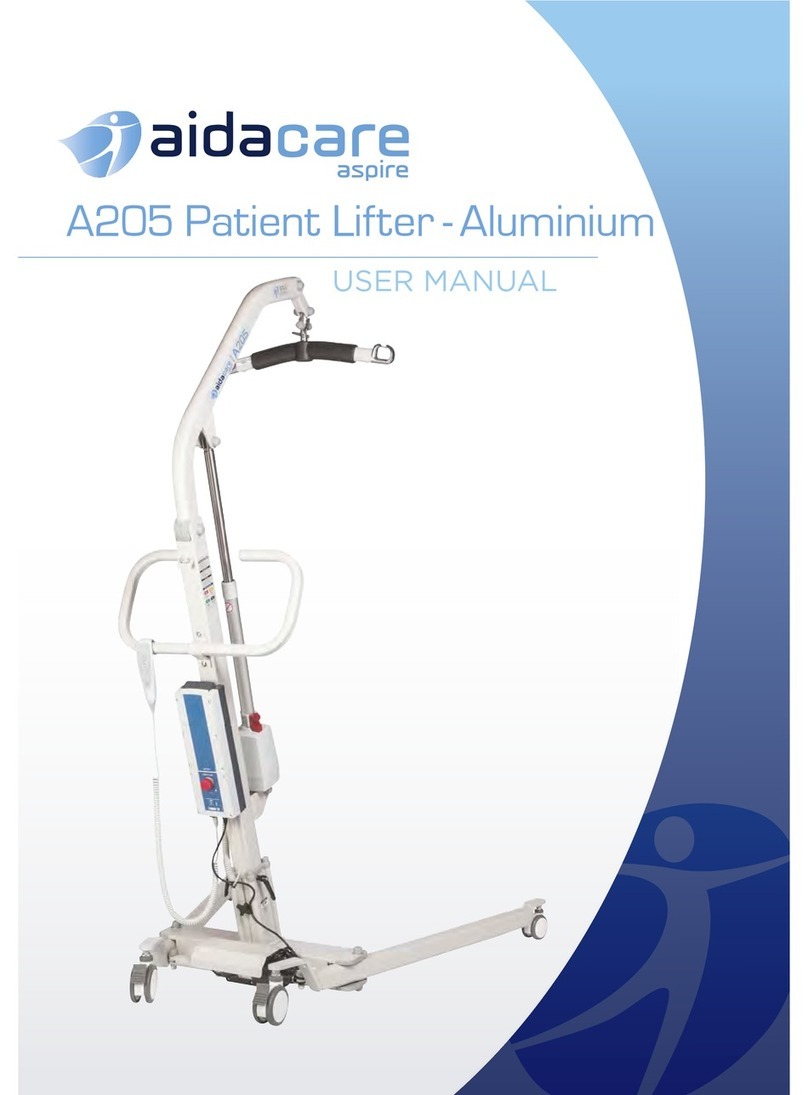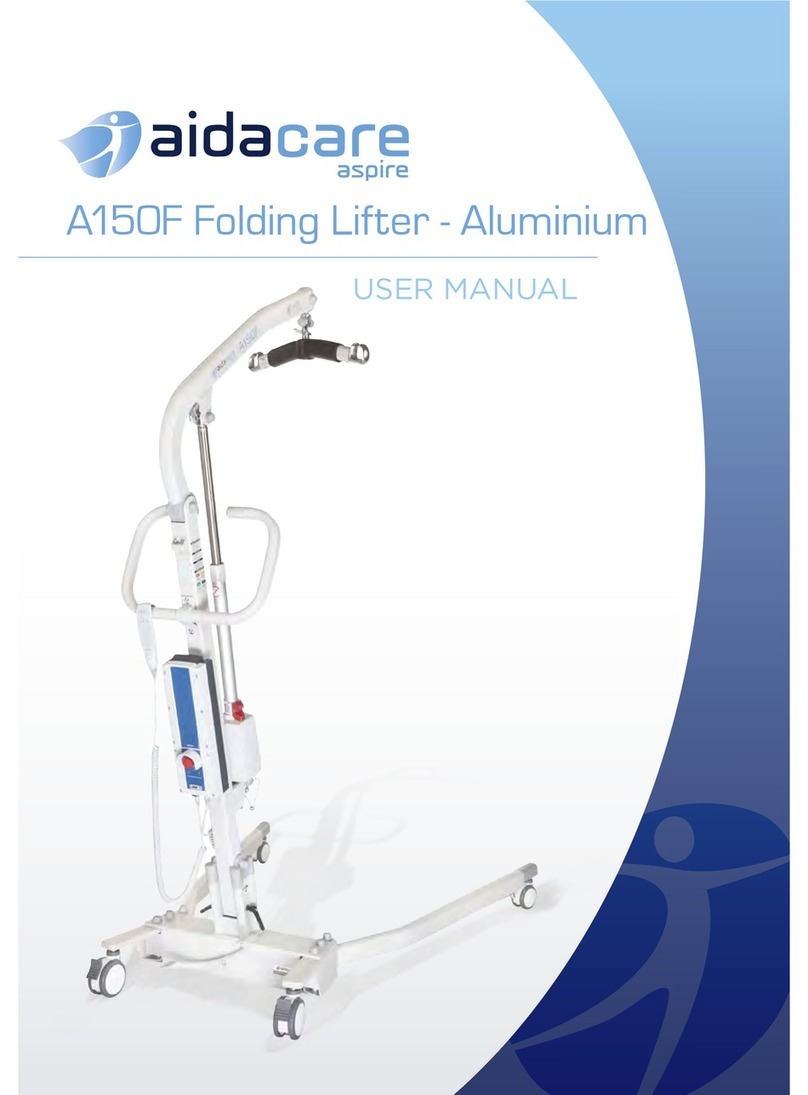
4www.aidacarelifters.com.au
2. SAFETY PRECAUTIONS
INTENDED USE OF THE PRODUCT
The ASPIRE A320 Lifter has been
designed to lift and transfer human
patients with the assistance of one carer
or attendant.
All ASPIRE patient lifters should ONLY
be used with Aidacare approved patient
slings, which have been chosen and
assessed by a competent trained health
professional. For a complete list of all
compliant lifting slings please contact
Aidacare on 1300 133 120.
IMPORTANT – only approved slings and
accessories are compatible with this
lifter. If you are unsure please contact
Aidacare on 1300 133 120.
The correct and appropriate use of the
ASPIRE A320 Lifter reduces the risks
associated with manual patient handling.
The lifting and transferring of patients
should always be assessed and planned
by a trained health professional.
SAFETY CONSIDERATIONS
ALWAYS ensure that attendants have
read this guide before operating this
patient lifter.
ALWAYS use slings that are assessed
and considered suitable by a trained
healthcare professional.
ALWAYS ensure the area around the
lifter and patient is clear of obstructions.
ALWAYS minimize the distance over
which the patient is being transferred by
positioning support surfaces as close as
possible.
DO NOT operate the lifter without
training in the safe operation of lifters
and slings. IF IN DOUBT DO NOT USE .
DO NOT use the lifter where any doubt
exists regarding the safety of the lifter
including but not limited to wear or
damage with particular importance to
be placed on the yoke and lifter sling
attachment points.
DO NOT use the lifter with slings showing
any signs of wear or damage, including
fraying.
DO NOT exceed the 320kg safe working
load of the ASPIRE A320 Lifter.
DO NOT use the lifter as a means of
transportation over distances in excess
of 3 metres. It is not designed as a
transportation device.
This is the direction of travel for which
this lifter has been designed.
FORWARD





























